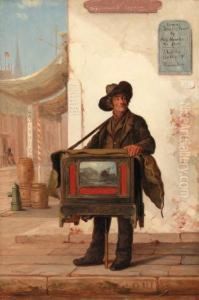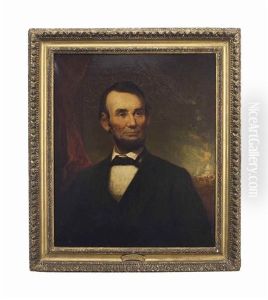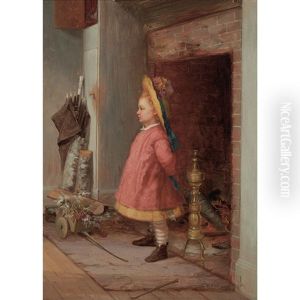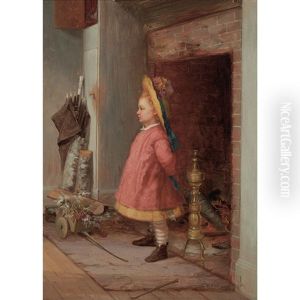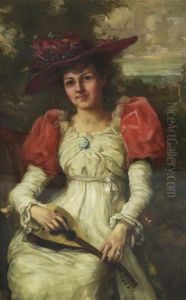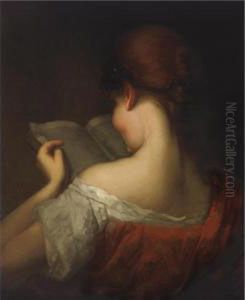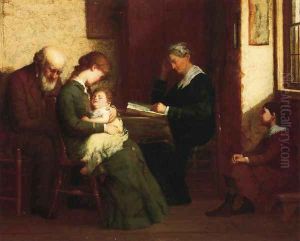George Henry Story Paintings
George Henry Story was an American painter born on January 19, 1835, in New Haven, Connecticut. He was known for his portraits, genre paintings, and historical scenes. Story began his artistic education under the tutelage of the well-known historical painter Henry Peters Gray in New York City. He furthered his studies in Düsseldorf, Germany, a center for art learning in the 19th century, and later in Paris, France, where he was influenced by the work of the Old Masters.
Story's early career was marked by his portraits, which gained him recognition and success. He painted notable figures of his time, including a portrait of Abraham Lincoln. Story's work was characterized by his attention to detail, realistic representation, and use of light. Besides portraits, he also engaged in genre painting, depicting scenes of everyday life with a narrative element, and was also known for his historical paintings that often reflected important moments in American history.
During the American Civil War, Story worked as an illustrator, capturing the events of the war for Harper's Weekly, a job that took him to the front lines. After the war, he returned to his primary focus on painting. He became the curator of the Metropolitan Museum of Art in New York City in 1889, a position he held until 1906. Throughout his tenure at the museum, he was instrumental in the acquisition of significant artworks and in the expansion of the museum's collections.
Story's contribution to American art during the 19th century was significant. He was part of a generation of artists who helped to establish an American identity in art, distinct from European traditions. Story's paintings are held in various public and private collections, and his work has been exhibited in numerous galleries and museums throughout the United States.
George Henry Story's life spanned a period of great change in American art, and he witnessed the transition from European-influenced academic art to the emergence of uniquely American styles. He passed away on March 24, 1923, leaving behind a legacy of work that continues to be appreciated for its historical value and artistic quality.





